In a Philippine Call Center or in any other office setting in the world, it is always important to establish a culture that is conducive to the employees and the customers. Having this positive environment would not only help employees become productive but also ensure that you will have a team that is customer-centric.
The large number of call centers in the Philippines makes it one of the most competitive industries in the country. This means that each of them must be able to provide their best to every customer. With good communication being one of the most important elements in a call center, it is best to make sure that your office is always prepared for your clients.
These experts from different parts of the world definitely have the expertise to know how to have a productive customer-centric office. Here are some of their valuable insights and opinions on improving your office culture:
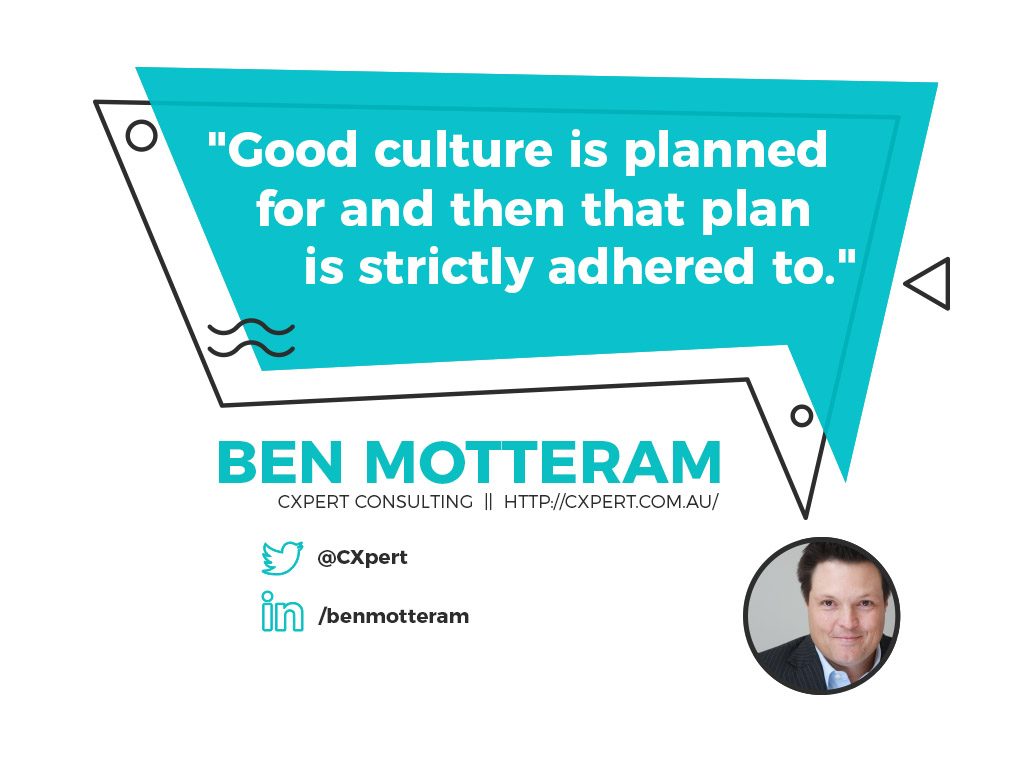
Ben Motteram
A well-known Customer Service evangelist, Ben Motteram is the man behind CXpert, which is a blog dedicated to giving valuable tips and advice on how to provide good customer service. When asked about what is needed to have a customer-centric culture, here’s what he said:
A customer-centric culture is the bedrock of all great customer experience programs. Good culture is planned for and then that plan is strictly adhered to. If I was starting a business today, the plan I would follow to create a winning culture is as follows:
- Define why you exist – what customer problems you solve. Align your Vision, Mission, and Values with that definition.
- Collect customer feedback, analyze it monthly, share it with employees, then close the loop with customers.
- Collect and analyze employee feedback then close the loop.
- Define your CX vision – the type of experience you want to give customers. Provide employees with the tools, systems, and processes they need to deliver that.
- Understand your customer experience by measuring it. How does it differ to your vision?
- Add to every job description in the company, how that role impacts the customer.
- Begin hiring people based not just on their aptitude for the job but also their fit with your Values.
- Add customer-centric KPI’s to employees’ targets.
- Initiate a customer service award for the employee that best embodies your Values.
- Ensure all executives live your values. Especially the head of the company.
- Communicate widely and often.
According to him, a customer-centric culture is one that must be planned and organized thoroughly. His plan is to create a winning culture that has a definite and well-defined vision that rewards its employees and makes sure that they are skilled and have good values. Along with maintaining values, it is important to reward the employees by giving them customer service awards as well. Most Philippine call centers have the practice of giving out awards for good customer service to some of their most skilled employees, and it is good to see, as this helps bolster employee morale.
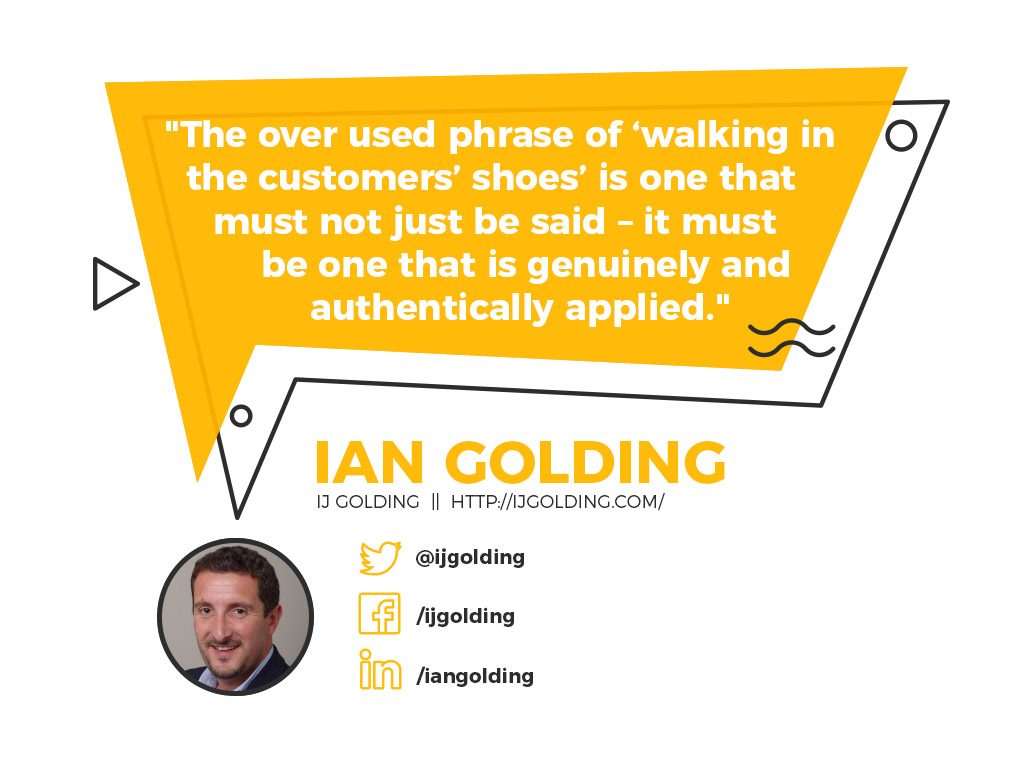
Ian Golding
A certified Six Sigma Black Belter, and a Certified Customer Experience Professional, Ian Golding has been at it for over 20 years and has dedicated his work to make sure that businesses would remain as customer-centric as possible.
When asked for valuable advice, Golding shared 7 tips on how businesses can achieve it. Here are those 7 tips:
- Make customer experience a priority for the whole company! It is not exclusively the domain of the customer experience team; or marketing; or customer service. It is not a project or an initiative. To transform the culture of a business to one that is focused on enabling everyone to THINK and ACT in the interests of the customer, then everyone must be clear about the role they play in making that a reality.
- Embed a customer experience framework – I have written recently about what I describe as the ‘Customer Experience Jigsaw Puzzle’. To create a customer-centric culture, it is critical that a business is able to introduce and embed some rigor and structure into the way it goes about managing the customer experience.
- Experience your customer and employee journeys. If a business wants to transform its culture, then it is vitally important that its people at all levels understand how it FEELS to be a customer and to be an employee. The overused phrase of ‘walking in the customers’ shoes’ is one that must not just be said – it must be one that is genuinely and authentically applied. To embed a customer-centric culture, all leaders would regularly be meeting and speaking to customers.
- Engage your people in improvement activity. To move step three one stage further, if you want to embed a customer-centric culture, then engaging your people in improving the customer experience is a fantastic way to make it happen. Too many organizations try and ‘DO’ things to their people. When it comes to influencing your people to change the way they behave, make them part of the change that needs to be made, rather than just doing it to them.
- Ensure customer experience is a key element of the business strategy. An organization with a customer-centric culture is one that recognizes it does not just exist to make money. Whilst this may seem like a rather strange statement, in reality, too many businesses have actually lost sight of the fact that they do not exist to make money – they do so to fulfill a purpose. The better able an organization is to fulfill its purpose – the more money it will make.
- Communicate, communicate, communicate! When it comes to creating a customer-centric culture, you cannot over-communicate the importance of the customer experience and work being done across the organization around it. A customer-centric business talks about customer experience regularly – not just once a month or once a year – but all the time.
- Get recognition and build authority. To sustain a focus on the customer experience and the desire to be a business that is customer-centric in the way it behaves, getting recognition for the way you do it and for what has been achieved is incredibly effective. Yet recognition of the importance of customer experience also comes in the form of knowledge. Your ability to transfer knowledge to your people will also build their personal authority in the subject.
Golding’s 7 tips emphasize the importance of having employees feel what it’s like to be one of their customers so that they will be able to empathize with them. He also stressed the importance of authority and communication as factors to strengthen the customer-centric culture. He also shared an article he wrote, which helps embed customer-centric culture to people within the company. Applying these tips would help Philippine call centers place a strong emphasis on communication, and make good customer service the main priority.
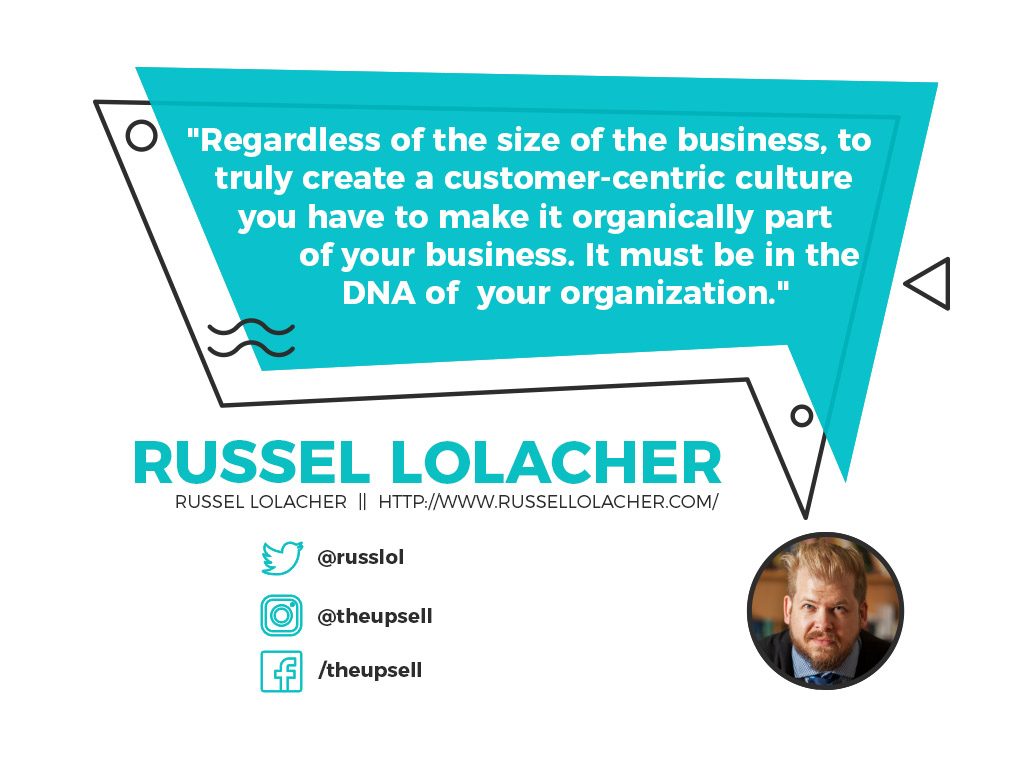
Russel Lolacher
Facebook| Facebook Group | Twitter | Instagram
Named as one of the Top 15 Net Promotor Score and Customer Service Thought Leaders to Follow in 2017 by CustomerGauge, Russel Lolacher is someone who believes that customer relationships are made when trust is created and that the actions to do so must be done in a step by step process. Here are some of the thoughts that he shared when it comes to creating a customer-centric culture:
Regardless of the size of the business, to truly create a customer-centric culture, you have to make it organically part of your business. It can’t be something you just talk about. It can’t be only believed in by pockets of business areas. It must be in the DNA of your organization.
This can be created through a combination of ways:
1) Values and Vision – The vision statement and corporate values of your organization must be public, relatable, repeated, and practiced. If they are a part of everyone’s day-to-day lives, it helps reinforce what their motivation is and where they’re wasting their time focusing on.
Example: repeated statements on whiteboards, in email signatures, at the bottom of agendas.
2) Executive Example and Leadership Love – For employees to really believe the organization is focused on the customer, they must see it in the words and actions of their executive and managers. They must demonstrate their willingness to step into roles that might be outside their job description or hierarchy (and not make a big deal that they are) in order to best serve customers.
Example: the CEO answering customer complaints, managers empowering employees to make decisions to help customers.
3) Celebrate Successes and Lessons Learned – whether it is a small or big win or a tiny or large failure, all customer engagement stories need to be shared. Successes spotlight best practices, build confidence in the organization and may provide repeatable wins. Failures, in a supportive and encouraging environment, provide case studies, opportunities to learn and processes to correct.
Example: sharing a customer spotlight story on the company website, discussing and dissecting a failure to understand what went wrong, what can be done to maintain the customer relationship and how it can be prevented from ever happening again.
For a company to be customer-centric, the employees have to be as well. It helps to think of employees building friendships (not just relationships) with their customers. If they don’t feel great about what they do and why they do it, they won’t be a very good friend to their customers. And their customers will see their interactions as forced and operational…not a good basis for a long-term friendship.
Lolacher states that a customer-centric culture must be a part of a company’s DNA so that it will be organically integrated within the office. Along with that, he also emphasized embodying the company values and vision, which helps reinforce the company objectives every day.
He also wants executives and managers to lead by example, and be willing to take roles that are out of the job description.
Lastly, employees must learn to celebrate every new lesson and experience that they learn during the day, which helps them grow and develop into better employees, thereby strengthening the customer-centric culture. Leading by example would definitely help take Philippine call centers to the next level, as seeing executives and managers do work outside of their job description would help motivate their employees into doing better.
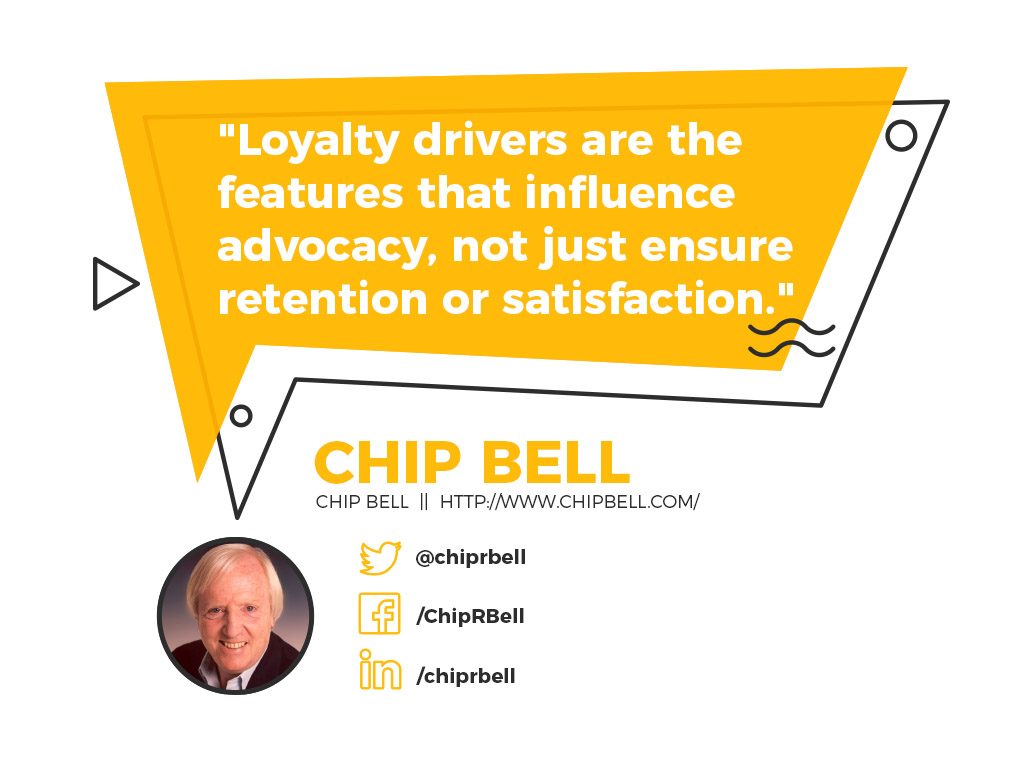
Chip Bell
A senior partner of the Chip Bell Group, an author of 22 books, and a man who has helped Fortune 100 companies improve their marketplace reputation through customer-centric strategies, Dr. Chip Bell is definitely one of the most experienced customer service specialists around. His strategies are known for being powerful, along with being innovative and unique. He is also known to customize his presentations to make sure that he meets the needs of the audience. Here is his advice on becoming a customer-centric business:
Customer-centric means the organization is centered around the customer. If the goal is to get the entire organization’s culture (habits, practices, processes, behaviors) to support that outcome, start by being crystal clear about what your customers want, need and what drives their loyalty. Loyalty drivers are the features that influence advocacy, not just ensure retention or satisfaction.
Craft a customer strategy, standards and metrics around those drivers. Hardware the strategy, standards and metrics into the system-wide strategic objectives as well as the performance management systems that guide coaching, appraisal, career development, and compensation. Hire, onboard, train, empower, support, celebrate around those drivers as expressed in strategy-standards and metrics.
Here is a test question: how would the organization act different if 1/3 of the incentive compensation of the top 50 leaders (including the C-suite) were anchored solely to customer service metrics? Centric means centerpiece, not “one of our many important priorities.” How much of senior leadership’s time and attention is spent on actions and practices that make customers loyal?
Bell’s main focus is customer loyalty, which he sees as the starting point to creating a strong customer-centric culture. He also advises to create customer strategies based around the needs and wants of the customers themselves, and hire and train skilled staff that can work with this strategy. His simple yet strong advice ensures that a company, like a Philippine call center, is committed to the customer-centric vision.
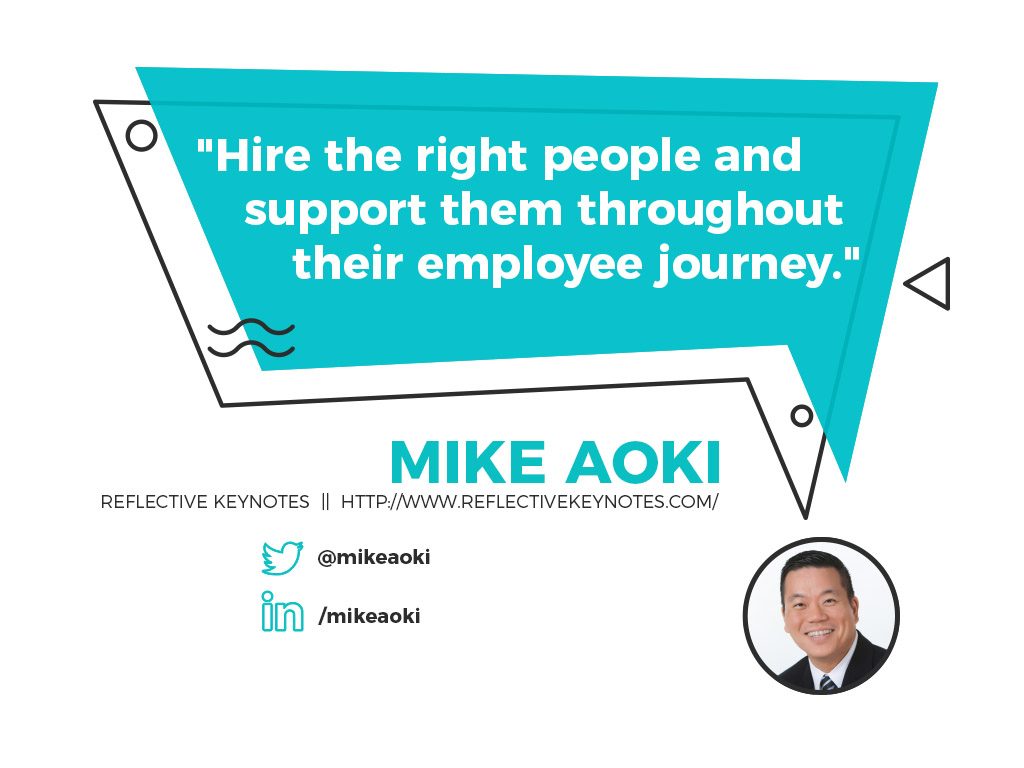
Mike Aoki
The president of Reflective Keynotes Inc., Mike Aoki is a contact center expert who was also chosen as one of the Top 50 Customer Service Thought Leaders on Twitter in 2014, 2015, and 2016. Here is his brief but powerful advice on strengthening the customer-centric culture:
Hire the right people and support them throughout their employee journey. Job postings, the interview process, and onboarding need to emphasize employee engagement and customer-centricity. As Sir Richard Branson said, “The way you treat your employees is the way they will treat your customers.” Set the right example by treating your new hires well. Give them training and support. Provide more than technical skills training. Train them on the value of each customer and how everyone, in every part of the organization, plays a role in delivering a truly great customer experience. Keep every employee focused on customer centricity by sharing customer success stories, customer satisfaction survey (CSAT) results and employee “service hero” successes!
For Aoki, the main focus is to hire the right people, who will commit to the goals and vision of the company. Apart from this, it should be a must to treat them well and give them the right training. Lastly, sharing positive success stories and good CSAT results would also help boost employee morale and further strengthen the customer-centric approach. Hiring the right people would definitely help Philippine call centers. Get the best people fit for the job and treat them well to help turn them into some of the best in the industry.
Key Takeaway
Call centers in the Philippines can benefit from the advice of these experts, as their calls for employee care and growth would help encourage good customer service practices, as well as help the company achieve high customer satisfaction scores. As call centers in the Philippines grow bigger in number, having a customer-centric approach would give them the edge over their competition.
PITON-Global connects you with industry-leading outsourcing providers to enhance customer experience, lower costs, and drive business success.